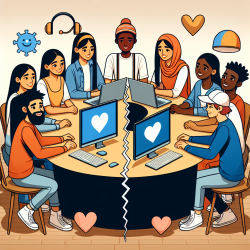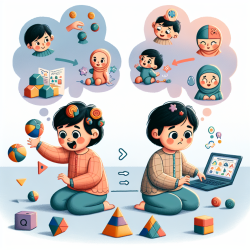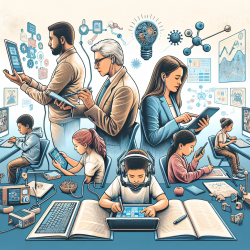Introduction
In today's digital age, internet access is not just a luxury but a necessity, especially for adolescents who rely on it for education, health information, and communication with healthcare providers. However, disparities in internet access persist, particularly among low-income and minority youth. The research article "National-Level Disparities in Internet Access Among Low-Income and Black and Hispanic Youth: Current Population Survey" sheds light on these disparities and offers insights that can guide practitioners in creating more equitable outcomes.
Understanding the Disparities
The study highlights that while internet access increased from 2015 to 2017, significant disparities remain. In 2017, 23% of youth in low-income households lacked home internet access, with Black and Hispanic youth facing the greatest challenges. Specifically, 29% of low-income Black youth and 21% of low-income Hispanic youth did not have home internet access. These disparities highlight the ongoing digital divide that can exacerbate existing health and educational inequalities.
Implications for Practitioners
For practitioners, these findings underscore the importance of considering internet access when designing and delivering online therapy services. Here are some strategies to improve outcomes:
- Assessment of Access: Begin by assessing the internet access of the children and families you serve. This can help tailor interventions to their specific needs and limitations.
- Flexible Delivery Methods: Offer therapy sessions through multiple platforms, including phone calls or text-based services, to accommodate those with limited internet access.
- Community Partnerships: Collaborate with schools, libraries, and community centers to provide internet access points for families in need.
- Advocacy: Advocate for policies that increase internet accessibility and affordability for low-income and minority families.
Encouraging Further Research
While this study provides valuable insights, there is a need for ongoing research to monitor changes in internet access and its impact on health and education outcomes. Practitioners are encouraged to contribute to this body of research by documenting their observations and outcomes related to internet access disparities.
Conclusion
The digital divide remains a significant barrier to equitable health and educational outcomes for youth. By understanding and addressing these disparities, practitioners can play a crucial role in bridging this gap and ensuring that all children have the opportunity to thrive in a digital world.
To read the original research paper, please follow this link: National-Level Disparities in Internet Access Among Low-Income and Black and Hispanic Youth: Current Population Survey.










